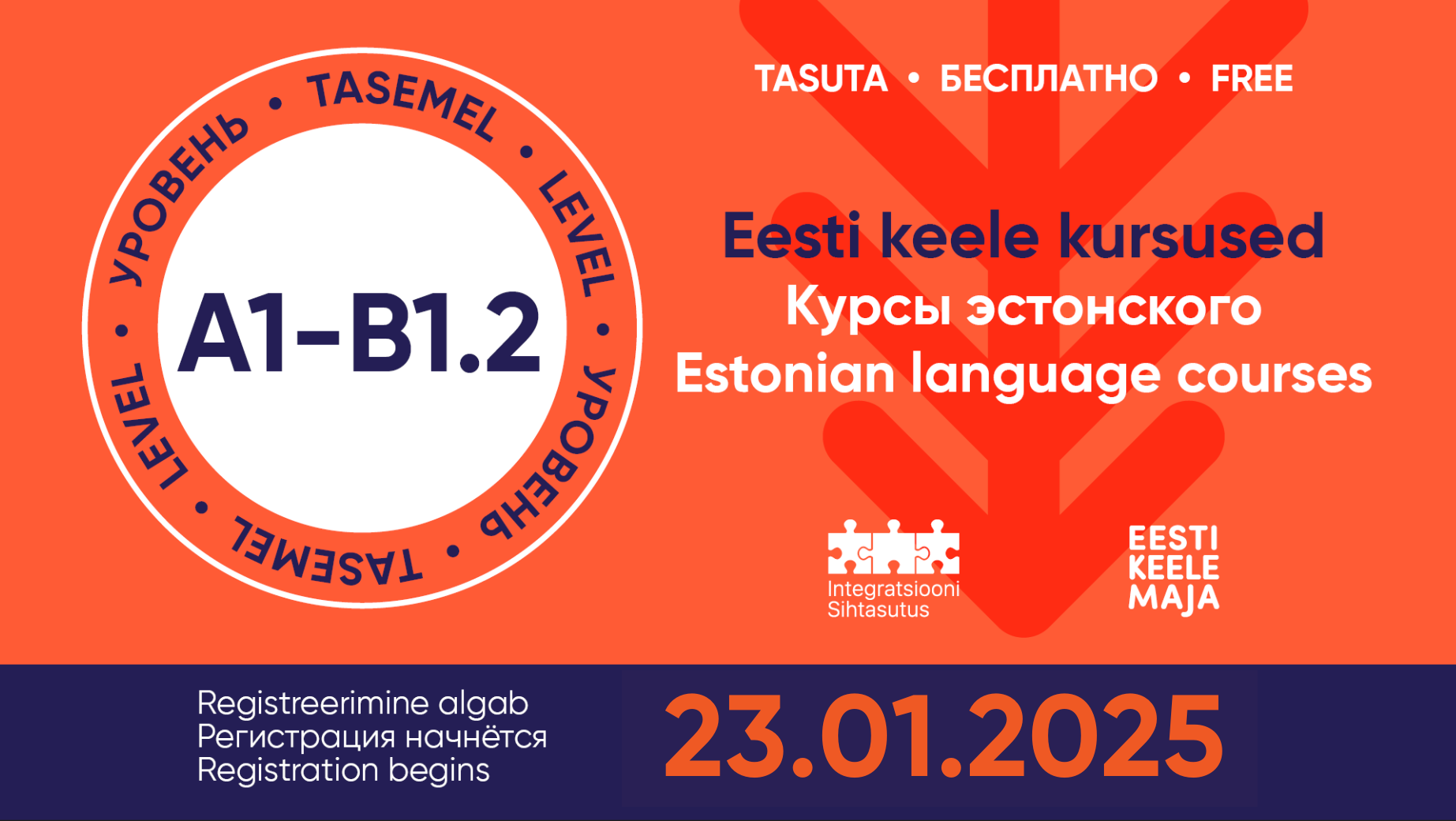Once again, we are inviting adults who have lived in Estonia for at least five years or who have returned to Estonia to attend free Estonian language courses. You can sign up from 23 January 2025 at 10 a.m. in our self-service environment.
We welcome permanent residents and returnees to enrol in courses that teach Estonian at the beginner (A1 and A2) and intermediate levels (B1.1 and B1.2). It is possible to learn in groups, which we run in the Estonian Language House and in language schools in different regions (e.g. Tallinn, Narva, Tartu) as well as online. There are 75 courses to choose from, starting in January, February, March, or April of this year (with 512, 464, 176, and 48 places respectively, for a total of 1,200 places).
In addition, we invite permanent residents and returnees to specialised courses that help to develop their Estonian language skills in a specific field and support the everyday use of the language. For example, you can take a writing course, a pronunciation course, and courses that support communication and introduce Estonian culture. Learning takes place online or on site in Narva and Tallinn starting from January, February, or March. There are 17 courses to choose from, starting in January, February, or March of this year (340 places in total).
Similar opportunities to learn Estonian will be offered to permanent residents and returnees again at the end of the summer, just before the courses starting in August or September.
Registration
Permanent residents and returnees are invited to select a suitable course or specialised course and sign up for it from 23 January at 10 a.m. via our self-service environment: https://iseteenindus.integratsioon.ee/login.
> To find the right course for you, we recommend that you pre-select on the basis of three aspects: the name of the service, the level of the service, and the location. This pre-selection will help you to find and sign up for courses of interest more quickly. One can not take the same level course twice!
> For registration to specialised courses please choose "specialised courses" from the Menu and then find a suitable course from the list.
> Registration will remain open as long as there are places available and closes the day before the course starts.
> Registering for any course comes with an obligation to study diligently all the way through the course, actively participate in lessons, and also learn independently. You can cancel your registration and withdraw from the course up to one day before the course starts.
> We no longer offer Estonian language courses at levels B2 and C1. However, we provide advanced language learners with opportunities to improve their language skills through our specialized courses and language-learning support activities. You can find the relevant information and register in our self-service portal
Additional information
If you have any further questions, please contact our consultants: email – info@integratsiooniinfo.ee, free phone line – 800 9999 (Mon.–Thu. 9 a.m. to 5 p.m., Fri. 9 a.m. to 4 p.m.).

